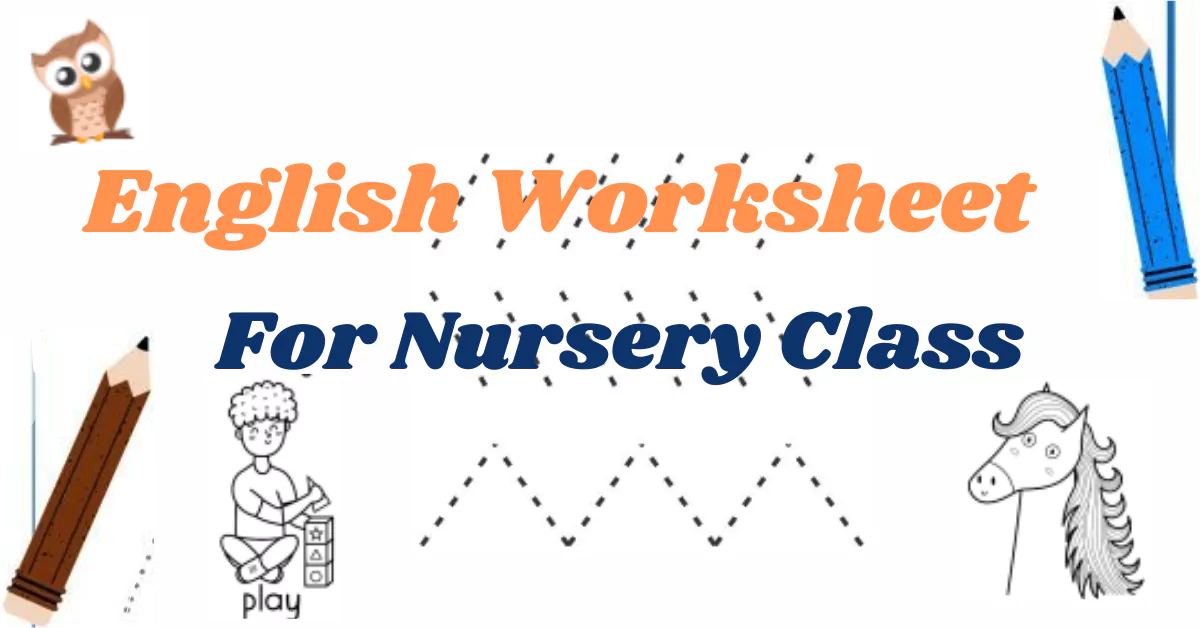English Worksheet for Nursery Classes are designed to introduce young children to the basics of the English language and literacy. These worksheets usually involve simple and fun activities such as coloring, tracing, matching, and identification.

The aim of these worksheets is to help nursery students develop important language skills such as letter recognition, phonics, vocabulary, and sentence structure, while also promoting fine motor skills and cognitive development. English worksheets for nursery class can be a helpful tool for teachers to reinforce learning and assess students’ progress.
Step By Step Guide Nursery Student To Practicing English Worksheet
Basically, when you practice English worksheets for nursery students you start the simple way. Here we provide some paths to help them.
1. Pre-Writing strokes:
Pre-writing strokes, also known as pre-writing skills, are fundamental movements that help children develop the motor skills and coordination needed for writing. Some type of example are given below:
a. Standing Line:

demonstrating how to draw a straight line from top to bottom. Use clear and simple language to explain the concept to the students. Show them the proper pencil grip and the correct way to hold the writing tool.
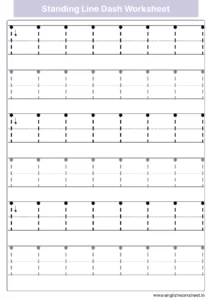
b. Sleeping Line:

Drawing sleeping lines requires coordination between hand movements and visual tracking. By practicing this stroke, nursery students enhance their hand-eye coordination skills, which are vital for future writing tasks.
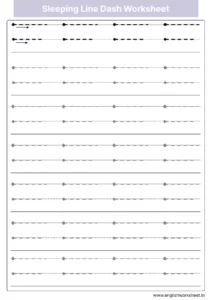
c. Slanting Line:


Slanting lines are a fundamental pre-writing stroke that helps nursery students develop the ability to draw diagonal lines. These diagonal lines are foundational for forming letters like “A,” “V,” “W,” and “Z.”
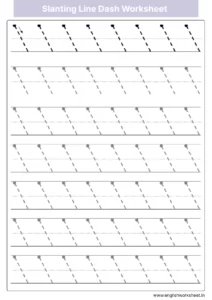
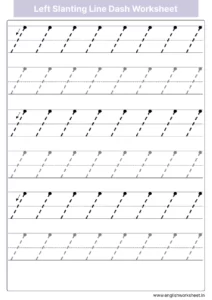
d. Curve Line:
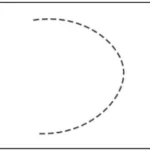

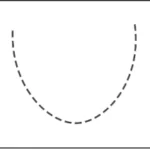
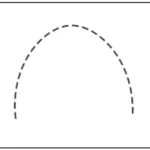
Drawing curve lines involves using the small muscles in the hands and fingers, which helps to refine and strengthen fine motor skills. This is important for tasks like holding a pencil and forming letters.
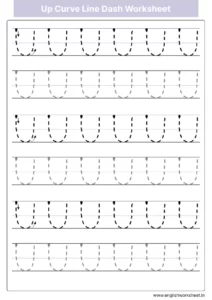
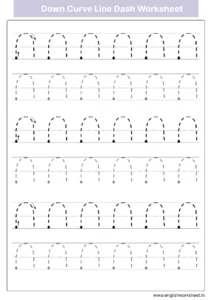
e. Up And Down Line:

Practicing up and down lines help nursery students gain control over their pencils or writing tools. They learn to maintain a straight vertical line and control the pressure applied while drawing, promoting proper pencil control and grip.
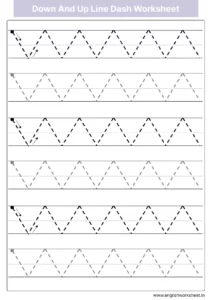
2. Tracing With Dots:
Tracing dots helps nursery students develop an understanding of spatial relationships. By following the dots in a specific pattern, they learn to navigate space and develop spatial awareness.
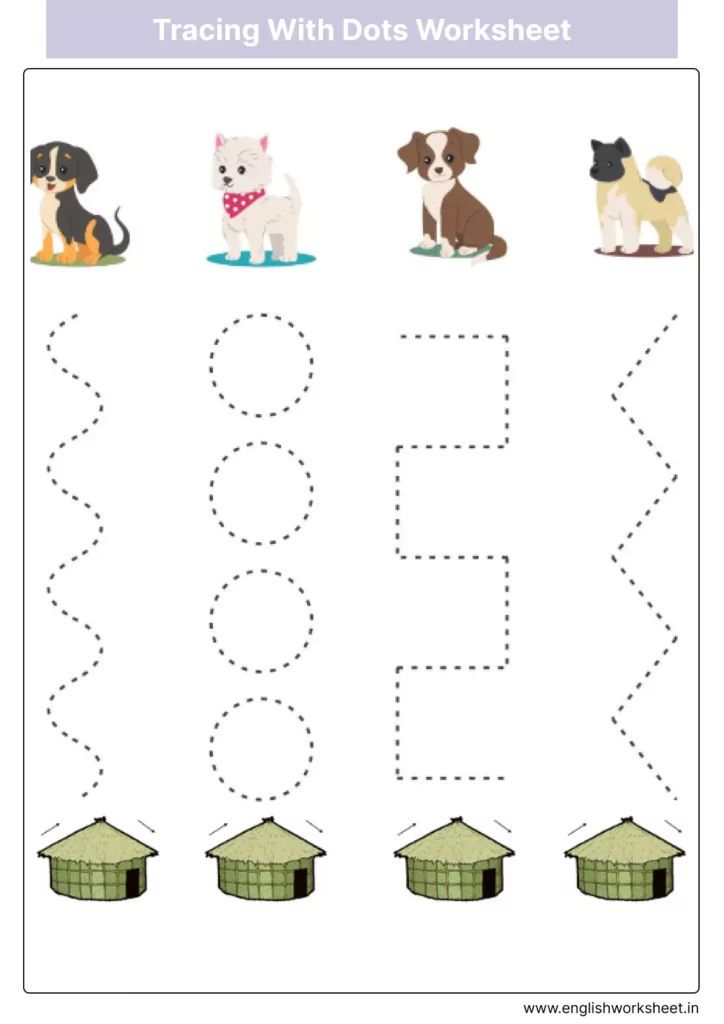
3. Standing And Sleeping Line Letters:
Practicing these letters with nursery students helps them become familiar with the standing and sleeping line strokes, enhancing their letter recognition and formation skills. It is important to provide guidance, visual aids, and opportunities for hands-on practice to support their learning and progression.
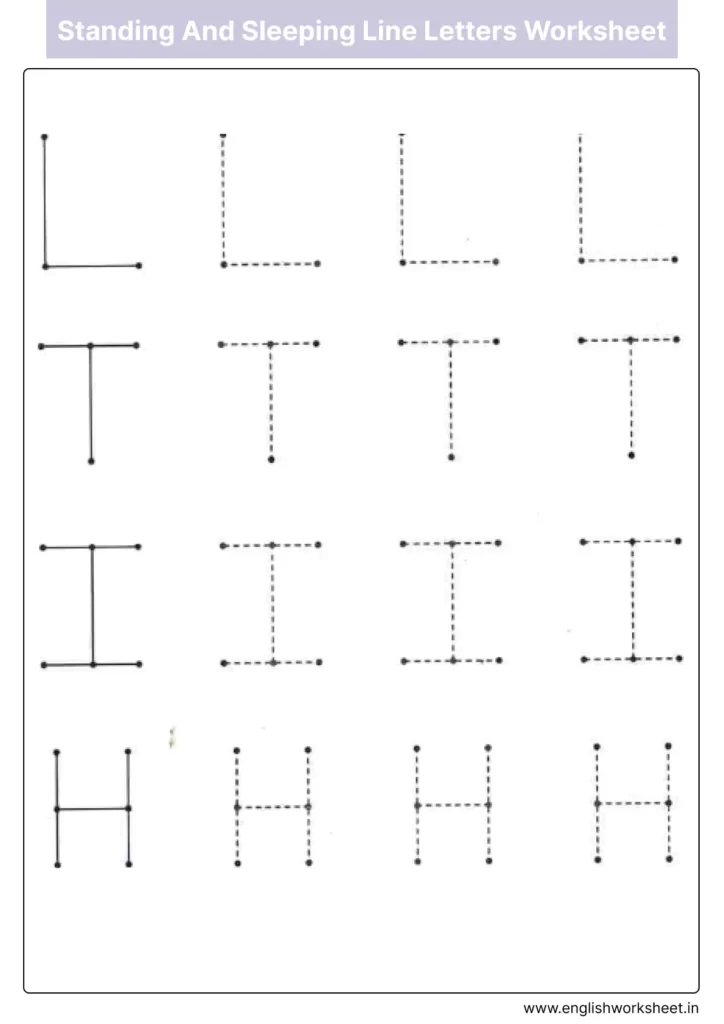
4. Slanting Line Letters:
Slanting line letters, such as “A,” “V,” “W,” and “Z,” provide opportunities for nursery students to practice forming diagonal lines. By mastering the slanting line stroke, students gain the foundation to write these letters accurately and confidently.
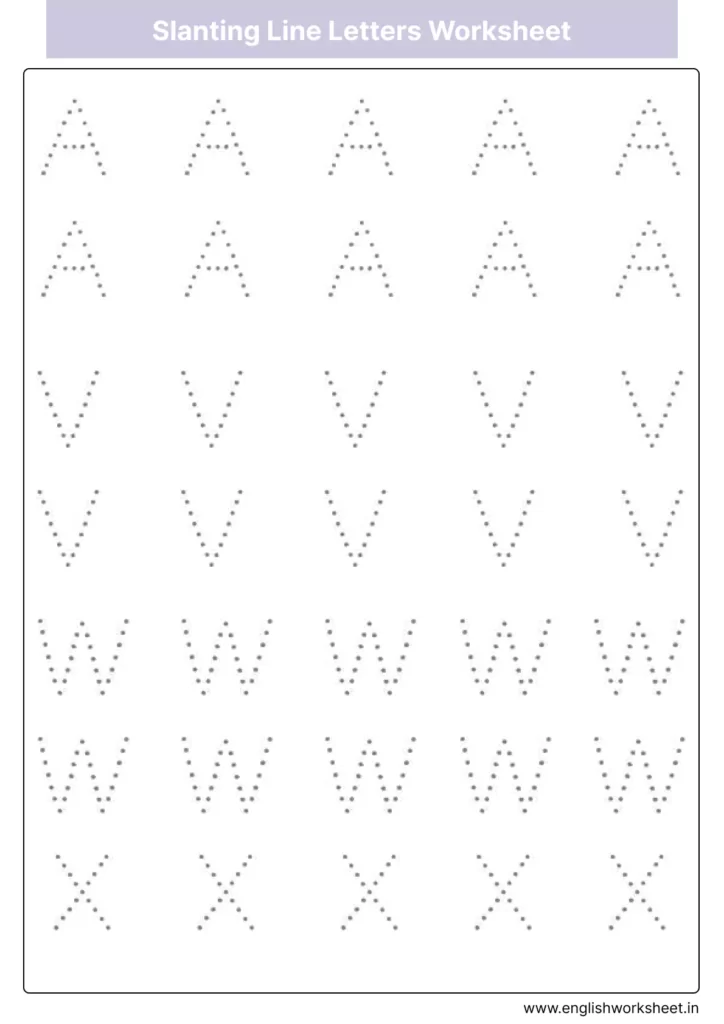
5. Curve Line Letters:
Curve line letters, such as “C,” “O,” “S,” and “U,” provide opportunities for nursery students to practice forming smooth and rounded curves. By mastering the curve line stroke, students gain the foundation to write these letters accurately and confidently.

6. Look And Write:
Engaging in “look and write” activities promotes visual discrimination skills. Nursery students learn to observe the details of the letter and differentiate it from other letters or shapes, enhancing their ability to recognize and distinguish letters.
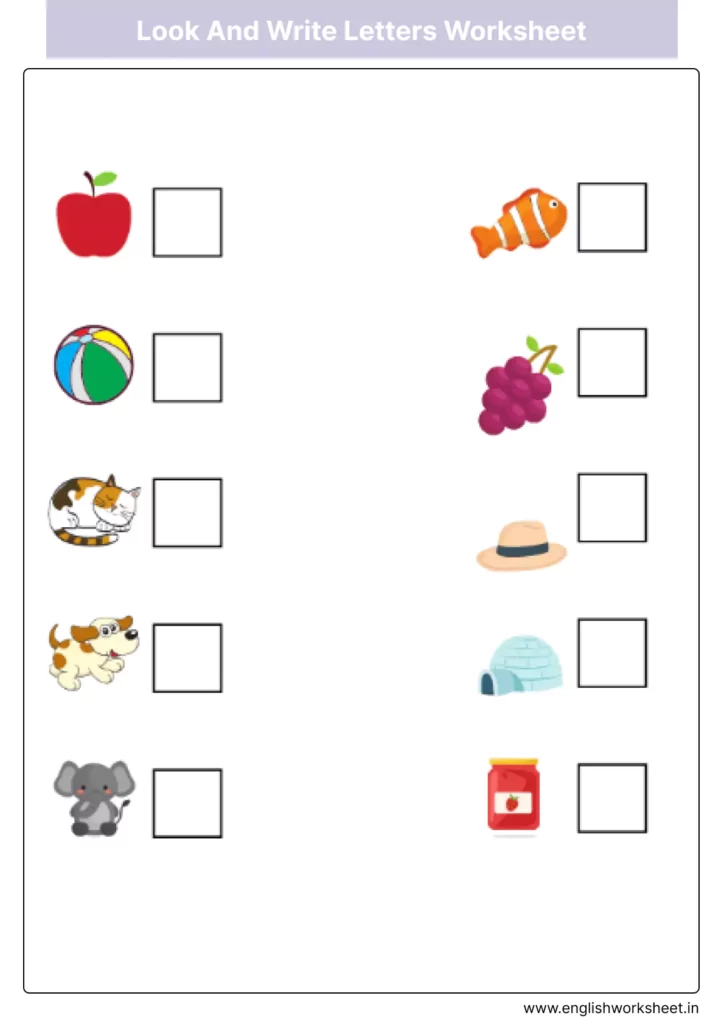
7. Circle The Correct Alphabet:
Engaging in Circle the Correct Alphabet activities promotes visual discrimination skills. Nursery students learn to observe the subtle differences between similar-looking letters and select the correct one, enhancing their ability to discriminate and differentiate letters.
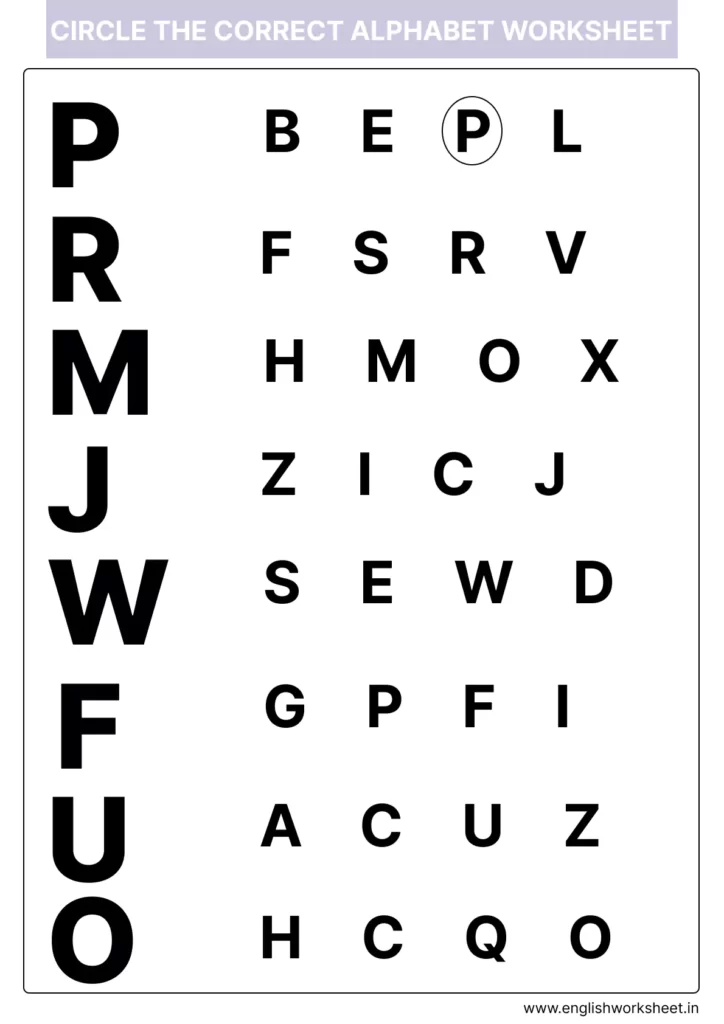
8. Fill In The Blanks:
These activities support nursery students in understanding the sequential order of the alphabet. By filling in the missing letters in a sequence, students reinforce their knowledge of the alphabet’s order and develop a sense of alphabetical organization.
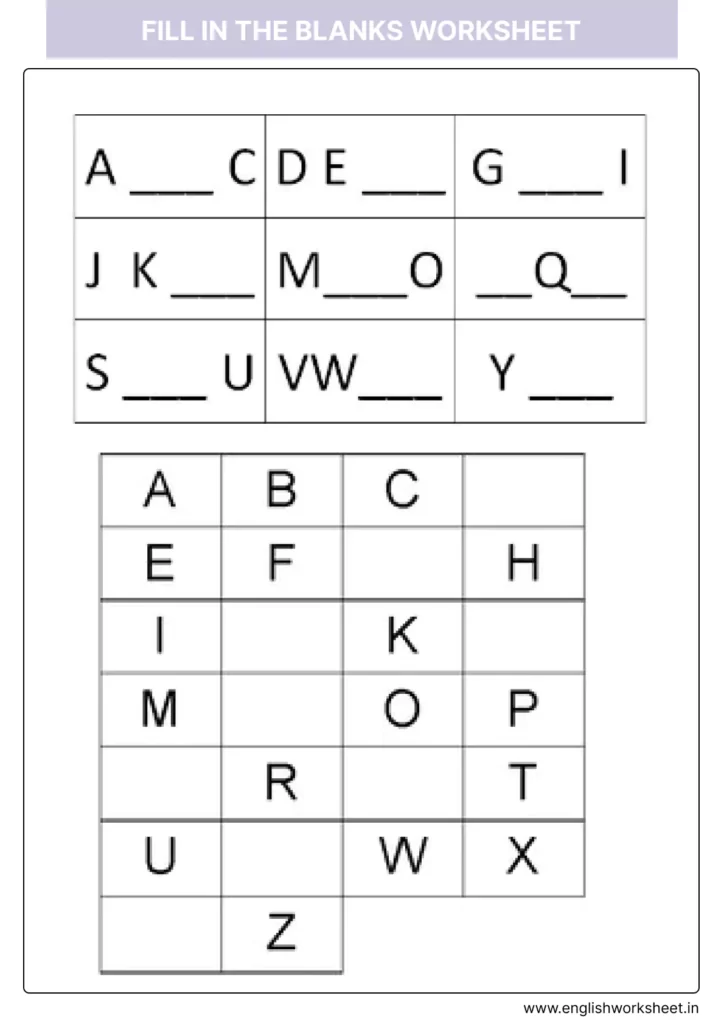
9. Matching The Pictures:
These activities support vocabulary development in nursery students. By matching letters with pictures, students learn the names of objects and reinforce their understanding of the words associated with the pictures.
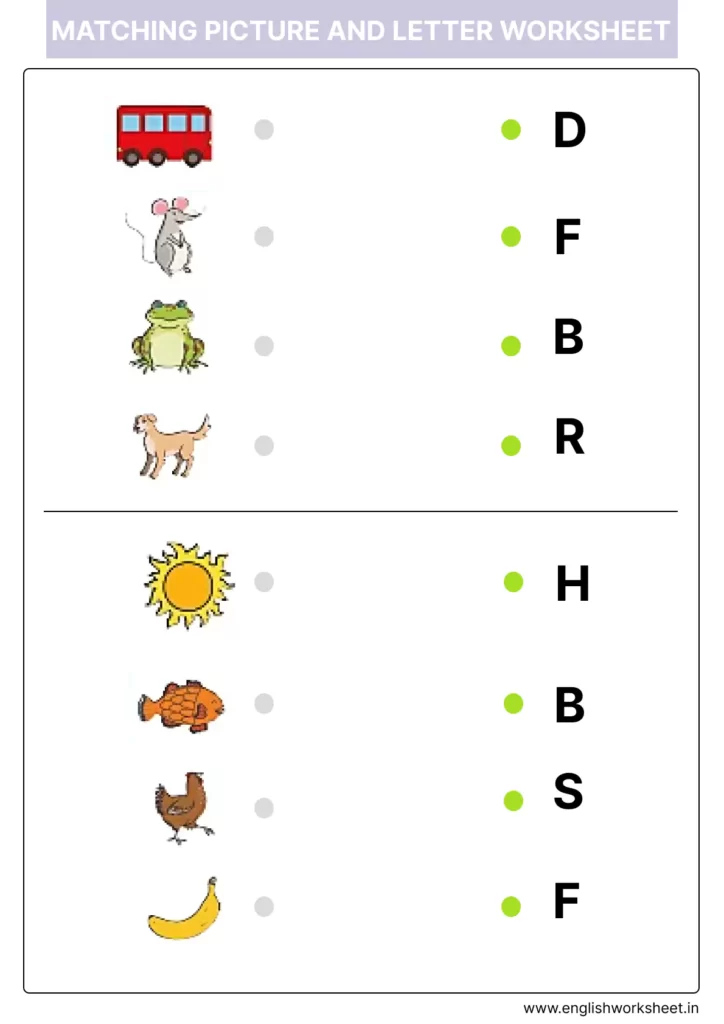
10. Matching The Same Letter:
Matching the same letter activities help nursery students reinforce their letter recognition skills. By identifying and matching identical letters, students become more familiar with the shape, form, and appearance of each letter.
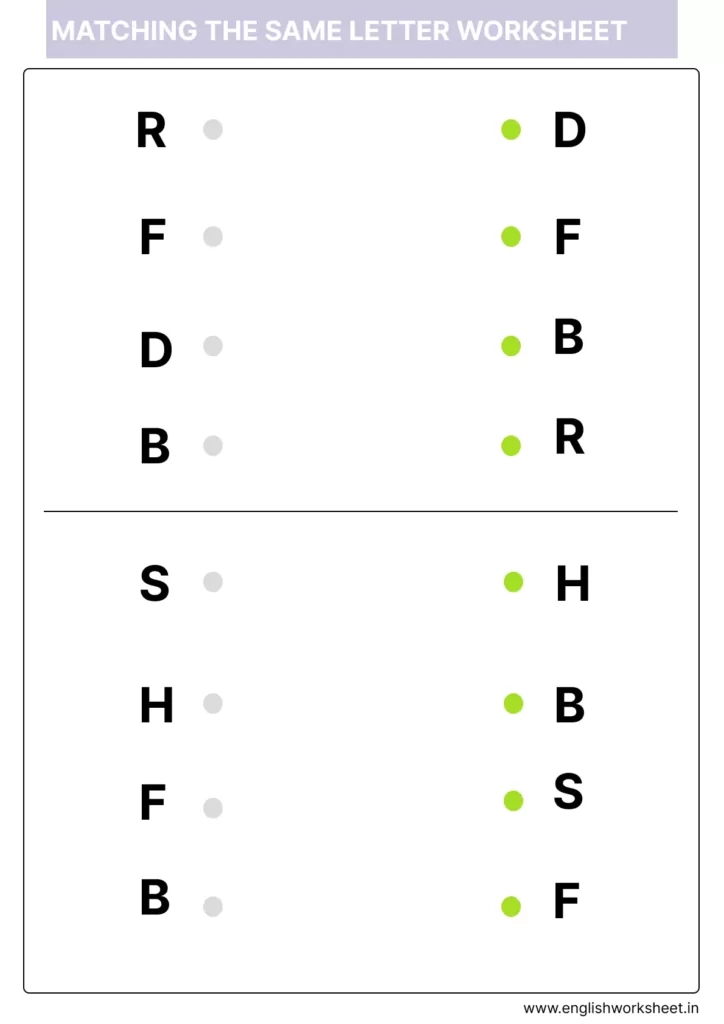
12. Phonic Sound:
Phonic sound activities help nursery students develop strong letter-sound correspondence skills. By associating letters with their corresponding sounds, students learn the basic building blocks of reading and spelling.
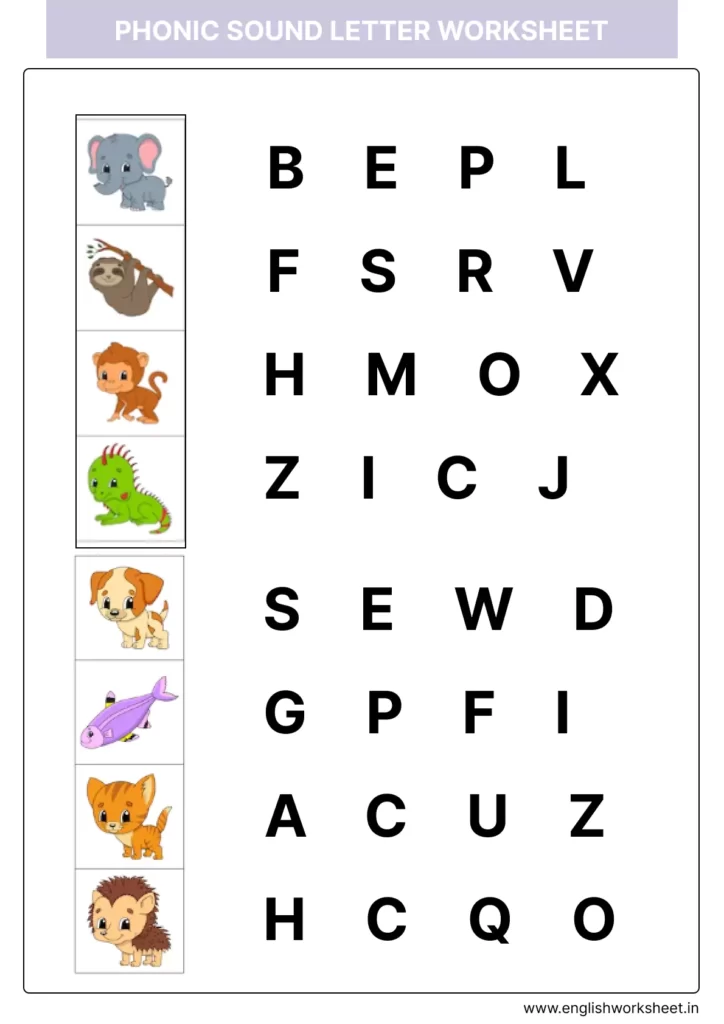
What Are The Benefits Of Solving Worksheets For Nursery Kids?
There are several benefits of solving worksheets for nursery kids. Here are some of them:
Reinforcing Learning: Worksheets provide a structured way for children to practice and reinforce what they have learned in class. This helps to consolidate their knowledge and develop their understanding of key concepts.
Developing Language and Literacy Skills: Worksheets can help to develop important language and literacy skills such as letter recognition, phonics, vocabulary, and sentence structure. This helps children to develop the foundational skills they need for future academic success.
Encouraging Independence: Worksheets provide a way for children to work independently and take responsibility for their own learning. This helps to develop their confidence and self-esteem.
Facilitating Assessment: Worksheets can be used as a form of assessment to track children’s progress and identify areas where they may need additional support or instruction.
Engaging Children in Learning: Worksheets can be a fun and engaging way to learn. They can help to capture children’s attention and motivate them to participate in learning activities.
Facilitating Parent Involvement: Worksheets can be used as a way to involve parents or caregivers in their child’s education. They can provide a way for parents to reinforce learning at home and to monitor their child’s progress.
Overall, the benefits of solving worksheets for nursery kids are that they help to develop important skills, reinforce learning, and facilitate assessment and parent involvement. However, it is important to use worksheets in conjunction with other teaching strategies and activities to ensure a well-rounded and engaging learning experience for children.
How To Practicing English Worksheet For Nursery Class Students?
Practicing English worksheets with nursery students can be a fun and engaging way to reinforce learning and develop language skills. Here are some tips on how to effectively practice English worksheets with nursery students:
Introduce the Worksheet: Before starting the worksheet, introduce the activity and explain the task to the students. Encourage them to ask questions and clarify any doubts.
Demonstrate the Activity: Model the activity for the students and demonstrate how to complete it step-by-step. Use simple and clear language and make sure the students understand the instructions.
Provide Guidance and Support: As the students start working on the worksheet, provide guidance and support as needed. Monitor their progress and help them with any challenges or difficulties they may encounter.
Encourage Independence: Encourage the students to work independently as much as possible, but be available to help and guide them when needed.
Use Positive Reinforcement: Praise and encourage the students as they complete the worksheet and provide positive feedback on their efforts and achievements.
Follow Up and Review: After completing the worksheet, follow up with the students to review and reinforce the concepts and skills covered. Use the worksheet as a starting point for further discussion and exploration of the topic.
Vary the Activities: Use a variety of English worksheets and activities to keep the students engaged and motivated. Consider incorporating hands-on activities, games, songs, and stories to create a well-rounded and engaging learning experience for nursery students.
FAQ’S
What is a nursery English worksheet?
A nursery English worksheet is a teaching tool that helps young children develop language and cognitive skills through activities such as coloring, tracing, letter recognition, phonics, and counting.
What are the benefits of using nursery English worksheets?
Nursery English worksheets can help reinforce learning, develop fine motor skills, encourage independence, prepare for future academic success, engage children in learning, and facilitate parent involvement.
What age group is suitable for nursery English worksheets?
Nursery English worksheets are suitable for young children between the ages of 3 and 5, depending on their individual development and readiness.
How should nursery English worksheets be used?
Nursery English worksheets should be used in conjunction with other teaching strategies, such as hands-on activities, group work, and games. They should be age-appropriate, engaging, and relevant to the skills and concepts being taught.
What are some examples of nursery English worksheets?
Some examples of nursery English worksheets include tracing letters, coloring pictures, matching uppercase and lowercase letters, and counting objects.
Can nursery English worksheets be used at home?
Yes, nursery English worksheets can be used at home as a way to reinforce learning and involve parents or caregivers in their child’s education.
Are there any potential drawbacks to using nursery English worksheets?
While nursery English worksheets can be a helpful teaching tool, they should not be the sole means of teaching and learning. Over-reliance on worksheets can lead to a lack of hands-on experiences and social interaction, which are important for a well-rounded education.
